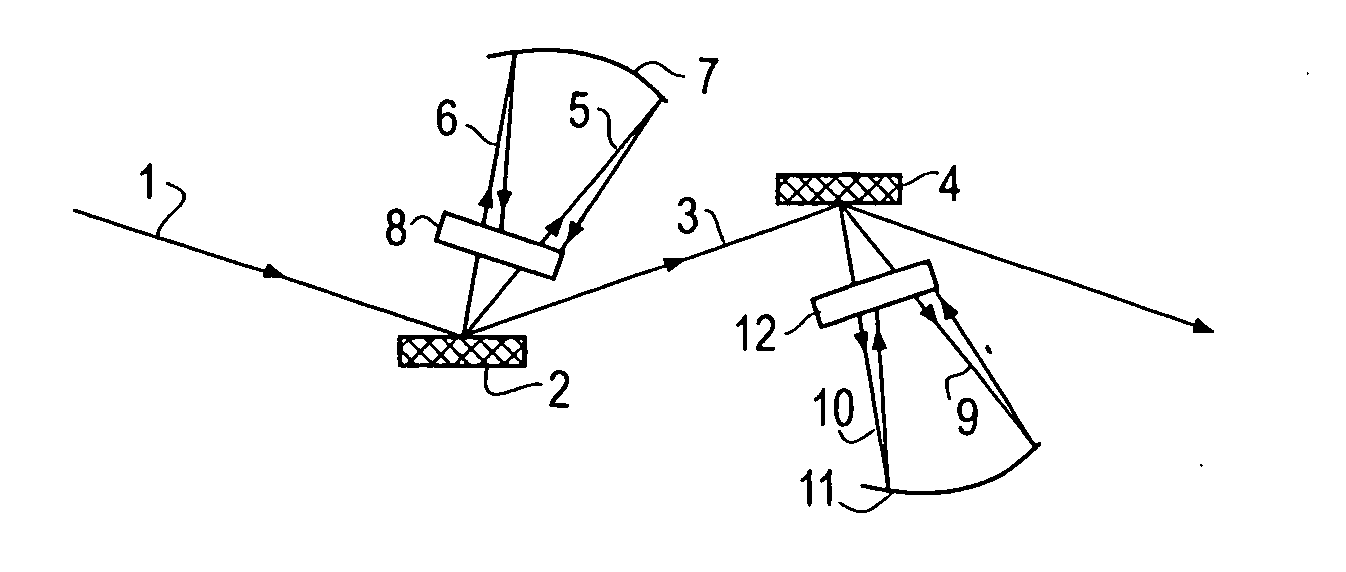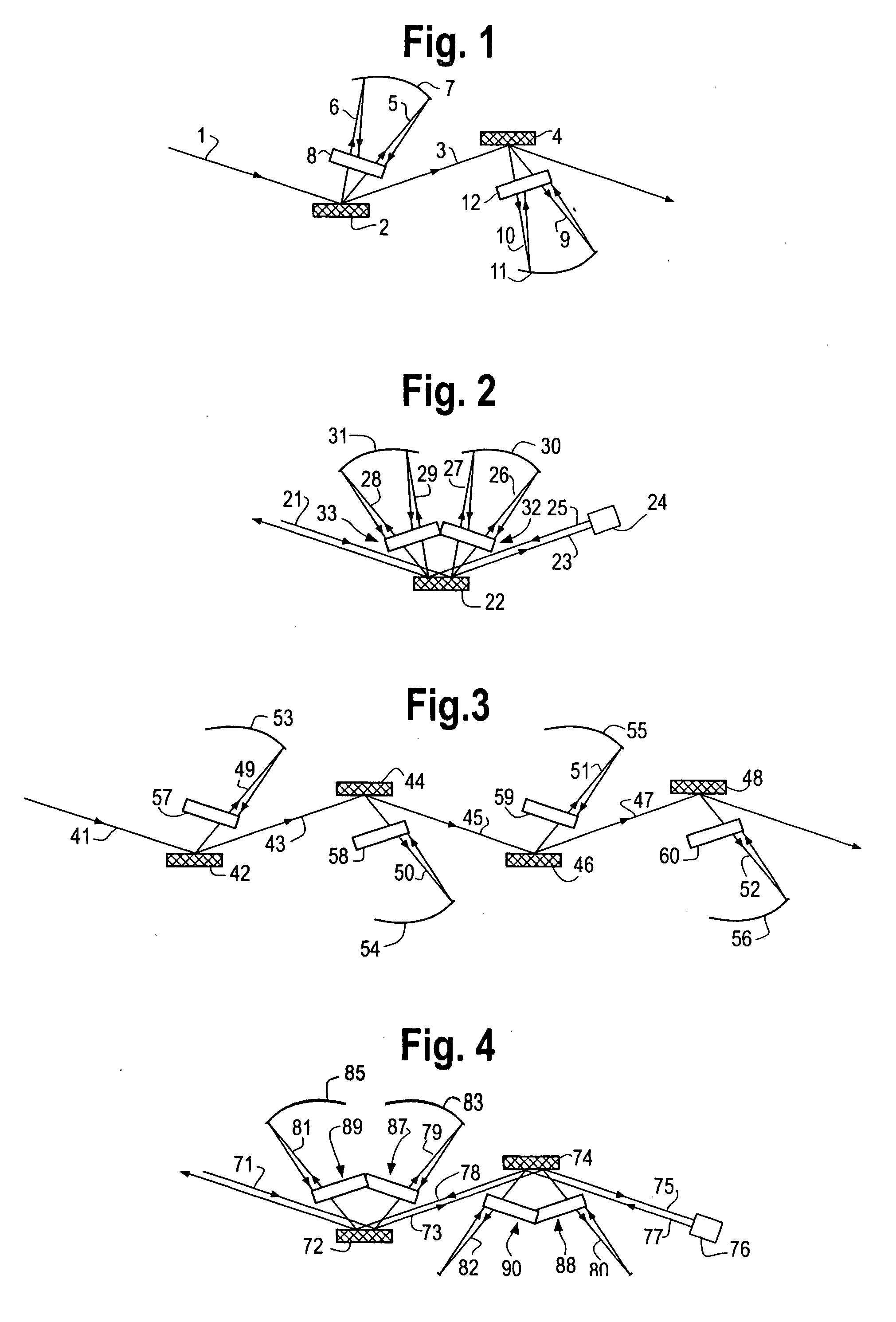Photopolarimeters and spectrophotopolarimaters with multiple diffraction gratings
a technology of photopolarimeters and spectrophotopolarimaters, applied in the field of photopolarimeters, can solve the problems of limited instrument sensitivity, insensitive azzam division-of-amplitude instruments, and small diffraction efficiency, and achieves high sensitivity for operation, wide spectral bandwidth, and simple construction
- Summary
- Abstract
- Description
- Claims
- Application Information
AI Technical Summary
Benefits of technology
Problems solved by technology
Method used
Image
Examples
example
A spectroscopic division-of-amplitude photopolarimeter according to the design shown in FIG. 2 was constructed and operated to measure all four Stokes parameters of arbitrarily polarized light over the 550-940 nm wavelength range in real time.
The (collimated) incoming beam was incident on an Al-coated, asymmetric saw-tooth (3.6 degrees blaze angle), 150 groove / mm, diffraction grating at an incidence angle of 68 degrees. A planar diffraction geometry was used and all diffracted orders were in a common vertical plane. Under these conditions, only the zero and negative diffraction orders propagate. The first two negative diffraction orders (−1 and −2) were focused by a spherical mirror onto a first detector array. The zero-order beam was reflected back onto the grating and two additional −1 and −2 diffraction orders were directed onto a second detector array. The spherical mirrors were tilted to focus the light onto detector arrays located outside the plane of incidence on the grati...
PUM
 Login to View More
Login to View More Abstract
Description
Claims
Application Information
 Login to View More
Login to View More - R&D
- Intellectual Property
- Life Sciences
- Materials
- Tech Scout
- Unparalleled Data Quality
- Higher Quality Content
- 60% Fewer Hallucinations
Browse by: Latest US Patents, China's latest patents, Technical Efficacy Thesaurus, Application Domain, Technology Topic, Popular Technical Reports.
© 2025 PatSnap. All rights reserved.Legal|Privacy policy|Modern Slavery Act Transparency Statement|Sitemap|About US| Contact US: help@patsnap.com



